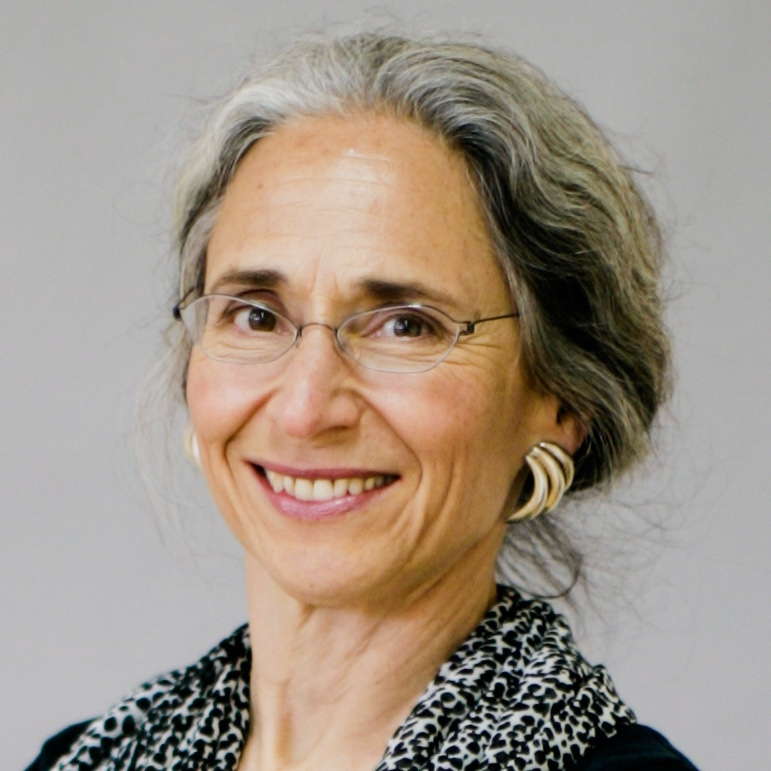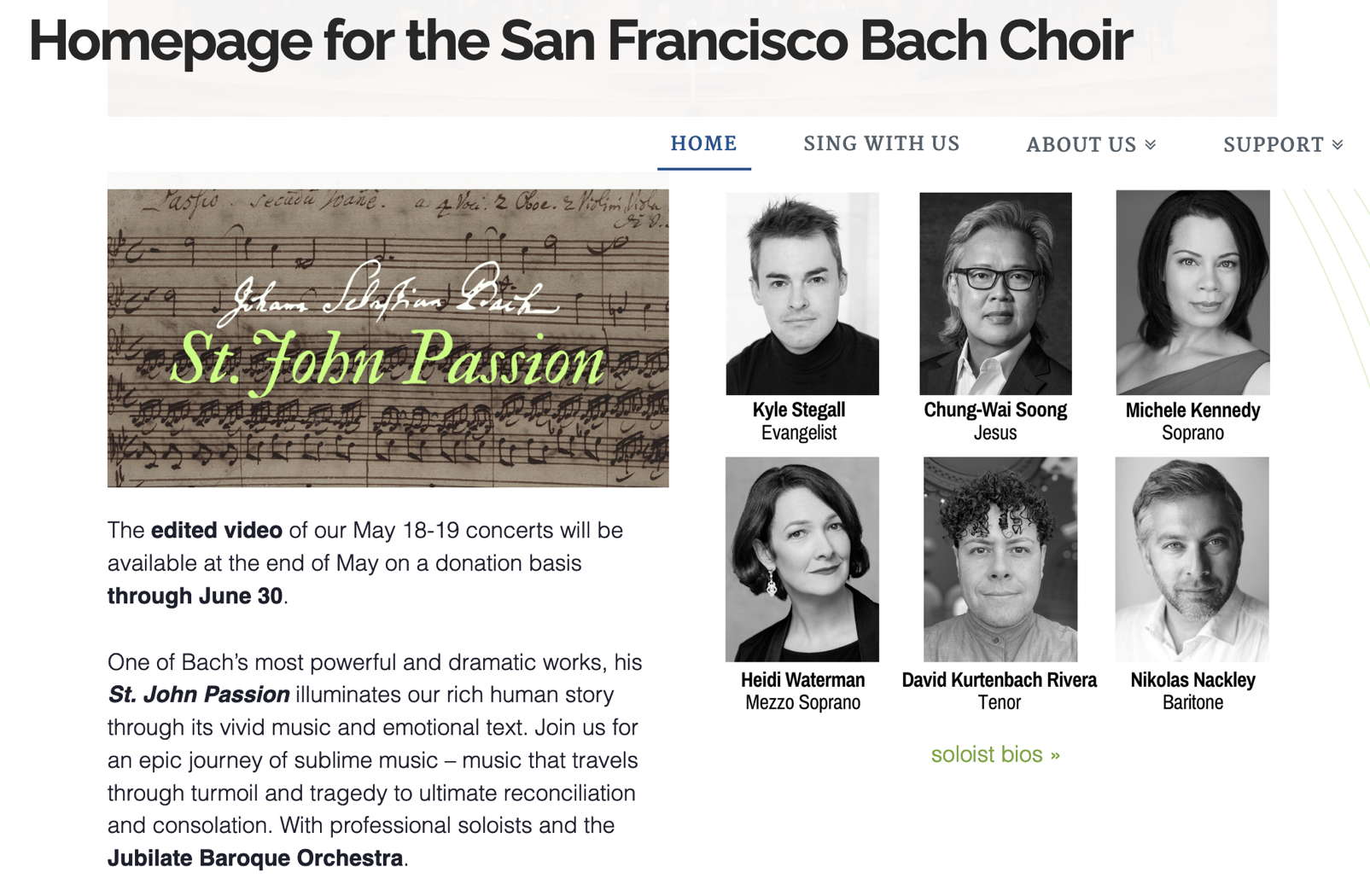 DISCUSSION: John Dante Prevedini leads a discussion about Composers, individuals or collective?, including contributions from David Arditti, Halida Dinova, Robert McCarney and Jane Stanley.
DISCUSSION: John Dante Prevedini leads a discussion about Composers, individuals or collective?, including contributions from David Arditti, Halida Dinova, Robert McCarney and Jane Stanley.
Intellectually and Spiritually Transformative
JEFFREY NEIL delves beneath the surface of Johann Sebastian Bach's 'St John Passion'
During a visit to Cologne Dom last February, I had a rather stunning realization about the stained glass windows. If you walk around this vast cathedral, you encounter panels that, while dazzling, are not always easy to connect to a story or a character in Scripture. And so it dawned on me that this commonplace about the pedagogical role of stained glass to illustrate stories to the unschooled might not be all that true. If two visitors - both of us with higher degrees in theology - were having a hard time identifying some of the stories, how transparent would these stories be to a medieval congregant who attended Mass twice a year and could not read the Bible? And how much of what is considered religious art does more than just shock and awe with color, like the random computer-generated patterns of colored glass that Gerhard Richter installed in the south transept across from the ancient stained glass?

Stained glass windows in Cologne Cathedral.
Photo © 2024 Jeffrey Neil
These questions of the pedagogical function and devotional possibilities of art were on my mind during the San Francisco Bach Choir's performance of the St John Passion on 18 May 2024. Is it just gorgeous music that you can allow to flood over you, but otherwise does not do much to deepen one's relationship to Scripture, or does the music challenge our conventional understanding of the text? It's not only that the Reformation and vernacular translations of the Bible made Scripture more accessible and intimate than a story told in large colorful images in a cathedral. Bach embeds hymns and tunes that would have been familiar to a regular churchgoer and stories that they knew backwards and forwards from Scripture. But the interplay of music and text, vocalization and instrumentation, creates a piece that is greater than the sum of its parts.
Artistic Director Magen Solomon explains:
There's the fluidity of the evangelist telling the story and the soloists who sometimes weave these amazing effects, colors ...
Her hands are dancing above her, and her whole body is engaged as she speaks.
Then some of the solos go straight to the heart of things
- she adds with a staccato dagger-motion.
There's such a variety of textures ... Keys are different, instrumentation changes, tempos of course change ...

Magen Solomon in 2016
One of these textures is the language itself. The Biblical verses that Bach used from Luther's German translation are syntactically simple (for German), the wording spare and precise. Take, for example, what Pilate says about Jesus: 'I am bringing him out' to the crowd, 'ich führe ihn heraus'. The evangelist then says, 'Also ging Jesus heraus', 'So Jesus came out'. Bach seizes on this word, which Luther's translation emphasizes. Heraus denotes simply moving out of one place and into another. But heraus comes to mean a revelation - that kind breaking out - not just a movement from one place to another. It is an ascent of truth when Pilate proclaims that Jesus has no fault. Bach works with this depth of a simple German preposition, allowing the music to further elevate the meaning of the text.
I have listened to recordings where singers garble words and slide through whole verses, making the language unintelligible to all but the most fluent German speakers. Aside from a few mispronounced vowels by two soloists, the singers' enunciation and pronunciation were flawless, so that anyone could follow and a non-German speaker could easily work the libretto's side-by-side translation. The focus on text and meaning are essential to Solomon's production: for the audience, which is given a libretto and commentary, and for the singers, whom she insisted write out translations on their sheet music. Solomon affirms her philosophy that 'really knowing what the text says enriches the experience enormously'.
This focus on text is supercharged by the performance of the evangelist, who takes simple narrative exposition and manages to make it shine more than any aria. Kyle Stegall richly deserves his reputation as 'one of the finest evangelists of his generation'. He can take a line like 'Jesus said to them' and elevate it to the sublime. His voice is expressive, resonant, and has both a warmth and clarity that make it unforgettable. I have never seen a singer that showed no sign of facial strain or who did not at some point reveal the artifice of acting. Mr Stegall made one completely forget that he was performing: the spirit of the words moved through him with all the guilelessness and tenderness of an evangelist.

Online publicity for San Francisco Bach Choir's 'St John Passion'
The great triumph of the St John Passion is to continually stem the tide of hatred or despair. It teaches the listener how to, for example, interrupt the normal emotional response of anger at the crowd demanding Christ's crucifixion by reflecting inward at 'my' sin or simply seeing how the prison or the tomb become the opening to heaven. Early on, in Recitative 5, the evangelist recounts one of those moments in the Bible that historically created outrage and acting out in the streets on Good Friday. The narrative verses describe the arrest and binding of Jesus and presentation to the notorious high priest Caiaphas. Heidi Waterman's aria contemplates the historical action from a distance, musically interrupting the violence and the automatic emotional desire for retribution by shifting the focus. She meditates on the enigma that it is no longer just Jesus who is bound, but the soloist who feels the bonds of her own sin. Jesus's wounds heal her from the Lesterbeulen, the 'dents' or 'hollows' of sin. Bach animates the paradox of wounds healing and bonds freeing, returning over and over to these confounding words.
The music at times supports and expands the emotion and the meaning of spoken words; and sometimes, it seems to create a sound that flat out contradicts them. The flute section supports the magnificent sound of soprano Michele Kennedy's thoughts when she contemplates following 'with joyful steps' Jesus as 'Life' and 'my Light', even as Peter's actions will later take an opposite path. There is a counterpoint of the ethereal music, which mirrors the soloists' loyalty, against the betrayal and darkness of Peter that follows. Likewise, when Peter denies Jesus, the music reaches a high note on the word 'cock'; then, the ugly and uncontrolled sounds of weeping are musically transformed in a measured legato up and down the scales, repeating 'wept bitterly'. It reminds me of what I was told was the rationale for why they always used to play Bach in the Port Authority bus station in New York. Supposedly, Bach could 'order' the emotions of drunks, pick-pockets, and over-stressed commuters from New Jersey. I don't think what Bach does is to impose a false order or rein in unsavory emotions; in contrast, Bach expresses what is happening internally during the external act of weeping: he translates the movement of compassion and the soul's wandering through the act of crying to trills and scales, rather than literally emulating the dissonant sound of sobbing.
There are other points where the music seems to contrast paradoxically with the text. When the Priests (sung by chorus in 23b) reproach Pilate for suggesting he will release Jesus, the flutes and strings add fervor, but it is mellifluous and has none of the harshness of an angry crowd. It's not uncommon for the music to peel away from the text, to provide a container for the intensity and allow the listener to absorb the text without being flooded. This disjunction happens repeatedly, as when the choral Mob clamors for the release of Barabbas, and both singing and orchestra are bright, harmoniously weaving together. Only the evangelist's response cuts through the sweet mass delusion with the harsh reproach: 'Yet Barabbas was a murderer!' Staccato and hard truth penetrate mellifluous and alluring cruelty. The music makes a theological statement that is very different from the continual noise and chaos of the crowd in the Passionsspiele in Oberammergau. It also contrasts with Bach's treatment of the same moment in St Matthew Passion with its vertical dissonance and harmonic surprise.
Some of the most penetrating instances of Bach's use of music to interrupt and transform our 'reading' of Scripture come through the enigmas in the chorale and solos. Tenor David Kurtenbach Rivera's strong, resonant voice invites us repeatedly in one of the longest arias to erwäge, to contemplate or ponder an enigma.
Jesus'
blood-tinged back,
in all its parts is just like the sky,
where, after the floodwaters
of our sins' deluge have receded,
the most exceedingly beautiful rainbow
stands as a sign of God's grace.
One travels from the back's broken skin and blood to the Himmel (sky or heaven) only by way of a complicated analogy, which the music hopes to paint for us: Sky raining, blood running, sin draining, and a rainbow forming. The enigma is not merely returned to by the accompanying strings, but continually opened and expanded as Kurtenbach Rivera vocalizes. We have a sense of unfurling and opening. Rationally, we may not understand the words, but at the poetic level of insight where faith apprehends, strings and voice unravel a mystery.
Director Solomon has brought together an expert baroque orchestra of players, some of whom have performed the St John upwards of a dozen or twenty times. The amateur choir's professionalism, command of the material and ability to blend were all apparent after five months of rehearsals. Chung-Wai Soong, as Jesus, had some voice-cracking moments, but otherwise, the soloists were in good form and as polished as any I have heard sing the St John.
Dr Solomon's emphasis on Word, the heavenly orchestration, the brilliant singers, and especially Mr Stegall's magical interpretation illuminated the rich texture of the St John Passion and activated its intellectually and spiritually transformative nature.
Copyright © 22 May 2024
Jeffrey Neil,
California, USA




